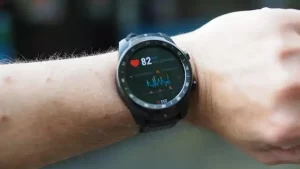FDA delays approval of new Friedrich’s ataxia drug Omaveloxolone
- Statins Lower Blood Lipids: How Long is a Course?
- Warning: Smartwatch Blood Sugar Measurement Deemed Dangerous
- Mifepristone: A Safe and Effective Abortion Option Amidst Controversy
- Asbestos Detected in Buildings Damaged in Ukraine: Analyzed by Japanese Company
- New Ocrevus Subcutaneous Injection Therapy Shows Promising Results in Multiple Sclerosis Treatmen
- Dutch Man Infected with COVID-19 for 613 Days Dies: Accumulating Over 50 Virus Mutations
FDA delays approval of new Friedrich’s ataxia drug Omaveloxolone
- Red Yeast Rice Scare Grips Japan: Over 114 Hospitalized and 5 Deaths
- Long COVID Brain Fog: Blood-Brain Barrier Damage and Persistent Inflammation
- FDA has mandated a top-level black box warning for all marketed CAR-T therapies
- Can people with high blood pressure eat peanuts?
- What is the difference between dopamine and dobutamine?
- How long can the patient live after heart stent surgery?
FDA delays approval of new Friedrich’s ataxia drug Omaveloxolone.
On August 9, Reata announced that the PDUFA date of its New Drug Application (NDA) for its Nrf2 modulator Omaveloxolone for the treatment of Friedrich’s ataxia was postponed by the FDA to February 28, 2023.

Friedreich’s ataxia (FA) is a rare hereditary, debilitating, and degenerative neuromuscular disorder usually caused by a trinucleotide repeat in the first intron of the frataxin gene As a result of sequence amplification, the frataxin gene is responsible for encoding the mitochondrial protein frataxin.
Pathogenic repeat expansions can lead to transcriptional abnormalities and reduced frataxin expression, causing mitochondrial iron overload and cellular iron dysregulation, increased sensitivity to oxidative stress, and impaired mitochondrial ATP production.

People with FA often experience symptoms in childhood, including progressive loss of coordination, muscle weakness, and fatigue.
The disease also causes visual impairment, hearing loss, diabetes and cardiomyopathy. The average life expectancy of FA patients is 35 years.
It is estimated that there are approximately 22,000 FA patients worldwide, including approximately 5,000 in the United States. There is currently no approved therapy for the treatment of FA.
Omaveloxolone is an investigational once-daily oral Nrf2 activator. Nrf2 is a transcription factor that promotes inflammation resolution by restoring mitochondrial function, reducing oxidative stress, and inhibiting pro-inflammatory signaling.

On January 31, 2022, Reata made its first rolling submission to the FDA for an NDA for Omaveloxolone for the treatment of patients with FA, and completed the rolling submission on March 31.
Rolling submission or rolling submission (Rolling Submission) means that when a pharmaceutical company applies for a new drug marketing application, it can first complete a part of the submission materials and submit them immediately, that is, submit the submission materials to the FDA in batches to shorten the review cycle.
On May 26, the application was granted priority review by the FDA, setting the PDUFA date as November 30, 2022.
Subsequently, at an interim review communication meeting, the FDA stated that Omaveloxolone lacked strong evidence of efficacy and would evaluate its cardiac safety in patients with FA.
Subsequently, Reata conducted a Delayed-Start Analysis of the MOXIe extension study submitted in March in response to the FDA’s query.
Using patient data from the FA-COMS study as controls, this analysis performed a new Propensity-Matched Analysis on data from the MOXIe extension study and analyzed the pathophysiological correlation between Nrf2 and FA. The FDA acknowledged the data.
Part 2 of the MOXIe study is a global, multicenter, randomized, double-blind, parallel, placebo-controlled Phase II clinical trial of 103 patients designed to evaluate the efficacy and safety of Omaveloxolone in patients with FA.
The primary endpoint was change in modified FA Rating Scale (mFARS) score at week 48.
The FA Rating Scale (FARS) is a series of physical examination assessments to measure disease progression in patients with FA.
mFARS is a modified version of this rating scale used in clinical trials to assess the efficacy of investigational FA drugs.
The results showed that the study met its primary endpoint of a significant improvement (decrease) in mFARS score of 2.4 percentage points in the Omaveloxolone group compared to the placebo group (n=82; p=0.014).

The MOXIe Part 2 extension study was designed to assess the long-term safety and tolerability of once-daily open-label once-daily Omaveloxolone in patients with FA at Week 72.
Results of the delayed start analysis of additional submissions showed that the between-group difference in mFARS at week 72 (least squares mean -2.17 ± 1.09) was consistent with that at week 48 (least squares mean -2.91 ± 1.44).
Continued treatment effects were also consistent, meeting the criteria for non-inferiority. In addition, the mFARS score of disease progression at year 3 was significantly better in the MOXIe expansion group than in the FA-COMS group (p=0.0001).
Regarding the pathophysiological correlation between Nrf2 and FA, there was a dose-dependent increase in Nrf2 activity in patients in the Omaveloxolone group in MOXIe study part 1, and the MOXIe study part 2 showed a relationship between Omaveloxolone-induced increase in Nrf2 activity and improvement in neurological function association.
On August 8, the FDA officially responded that the data was a major revision to this NDA and extended the Prescription Drug User Fee Act (PDUFA) date to provide time for a full review and analysis of the new data.
Warren Huff, CEO of Reata, said: “We are delighted that the FDA has decided to review the new data we recently provided them.
We are still working to maintain communication with the FDA to ensure that the marketing application for Omaveloxolone for the treatment of patients with FA is approved as soon as possible. There are currently no approved treatments for this disease.”
FDA delays approval of new Friedrich’s ataxia drug Omaveloxolone
(source:internet, reference only)
Disclaimer of medicaltrend.org
Important Note: The information provided is for informational purposes only and should not be considered as medical advice.



